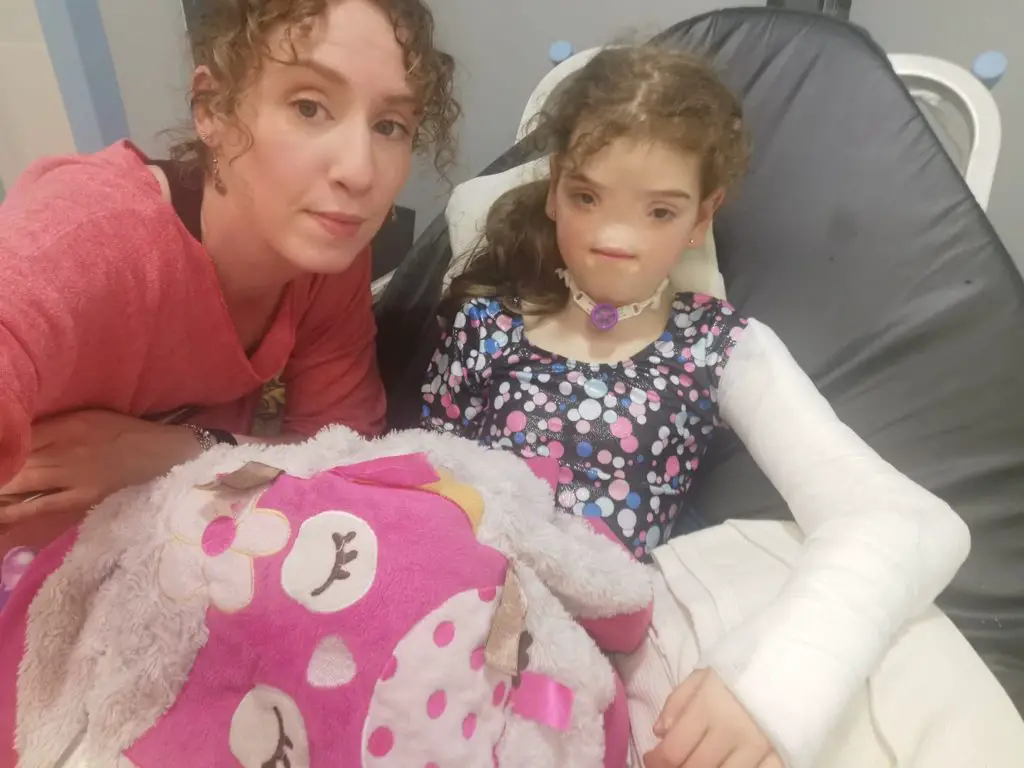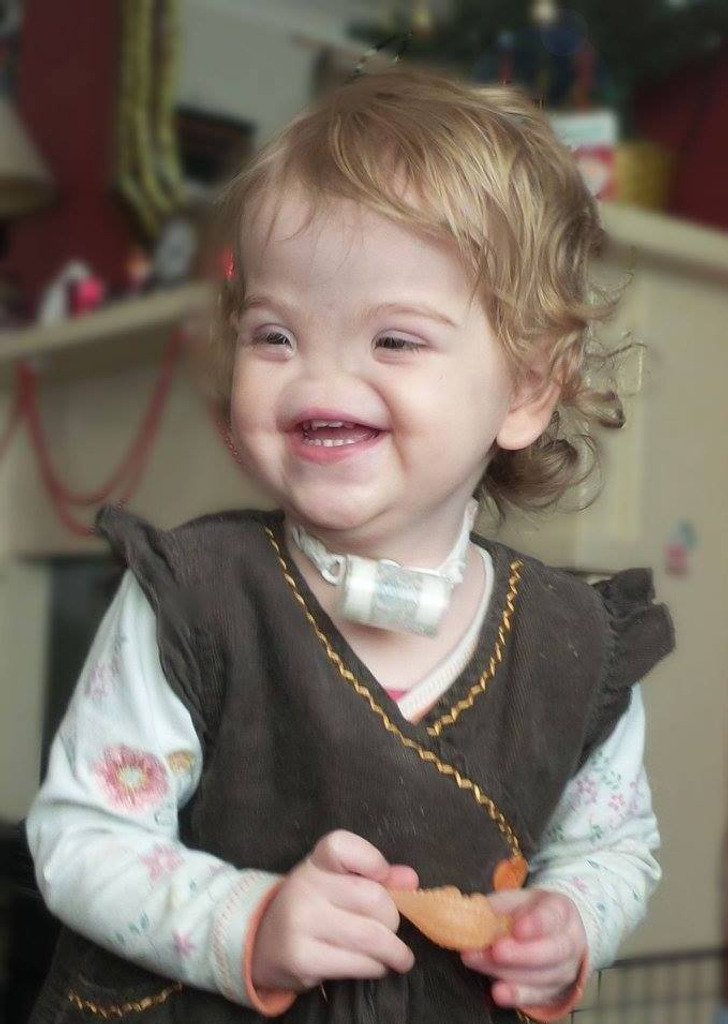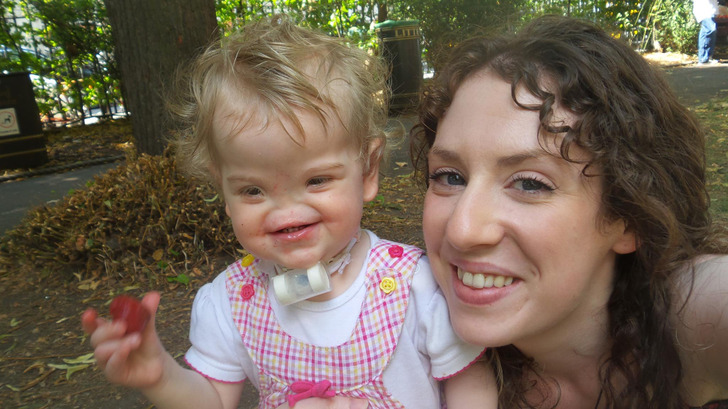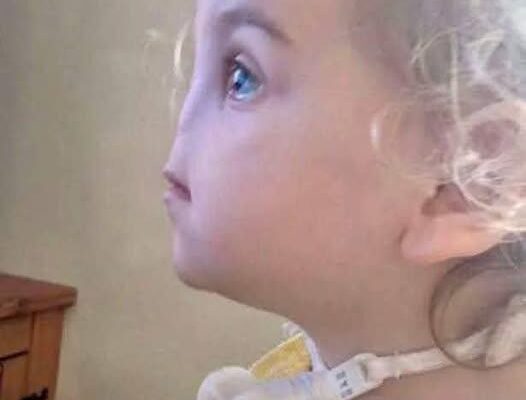Born on Valentine’s Day in 2013, Tessa Evans has captured hearts worldwide with her extraordinary resilience in the face of a rare genetic disorder known as Bosma arhinia microphthalmia syndrome (BAMS). This exceptionally rare condition affects the development of the nose and eyes, presenting daunting challenges that few encounter. Yet, Tessa’s story is one of courage, love, and unwavering hope — shining a light on what it means to overcome adversity with strength and the support of family.
What Is Bosma Arhinia Microphthalmia Syndrome?
Bosma arhinia microphthalmia syndrome, or BAMS, is a little-known but serious condition characterized primarily by the absence of the nose (arhinia) and underdeveloped eyes (microphthalmia). First identified in 1981, fewer than a few dozen cases have been reported globally, making it one of the rarest syndromes of its kind. Beyond facial features, BAMS can also affect brain development and other bodily systems, leading to a complex set of challenges involving breathing, vision, and neurological development.
Thanks to advances in genetics and medicine, doctors are now better equipped to diagnose and manage BAMS, offering hope to patients and families confronting this difficult diagnosis.
Tessa’s Inspiring Fight and Family Support
For Tessa Evans and her family in Maghera, Northern Ireland, living with BAMS has meant navigating a path filled with both obstacles and triumphs. While much of Tessa’s medical journey remains private, her parents, Grainne and Nathan Evans, have been tireless advocates—committed to securing the best possible care and raising awareness about this rare syndrome.
Tessa’s story embodies the power of early intervention, medical innovation, and, most importantly, the unbreakable bonds of family. Her journey is not only a testament to her own remarkable spirit but also a beacon of hope for others facing rare conditions worldwide.

Medical Breakthroughs and Hopeful Treatment Options for BAMS
While there is currently no cure for Bosma arhinia microphthalmia syndrome, rapid advancements in medical science are offering renewed hope for individuals living with this rare condition. Children like Tessa benefit from innovative treatments designed to manage symptoms and enhance their quality of life. These include the use of prosthetics, reconstructive surgeries, and support for vision and hearing challenges—each step helping to unlock a fuller, richer life despite the obstacles posed by BAMS.
One crucial early intervention is the tracheostomy procedure, which assists with breathing difficulties commonly faced by those with BAMS. This life-enhancing procedure, along with other targeted treatments, plays a vital role in stabilizing health and promoting well-being for children affected by this syndrome.
Looking ahead, medical technology is pushing the boundaries of what’s possible. Cutting-edge developments in 3D printing and medical imaging are revolutionizing reconstructive surgery—offering custom prosthetics and implants that restore both appearance and function. For children born without a nose, these innovations bring the promise of improved nasal structure and breathing ability, transforming lives in ways once thought unimaginable.
Together, these advances are not just medical milestones—they are beacons of hope, illuminating a future where rare conditions like BAMS can be managed more effectively, empowering patients and their families with new possibilities.

The Power of Family Support and Advocacy
Tessa Evans’ journey is a heartfelt testament to the crucial role family support plays in navigating life with a rare condition. Her parents, Grainne and Nathan Evans, have been steadfast advocates—sharing their experiences openly to shed light on the realities of raising a child with Bosma arhinia microphthalmia syndrome.
Their advocacy has done more than raise awareness; it has shown how love, determination, and resilience can transform challenges into sources of strength. Despite the many hardships, Grainne and Nathan remain unwavering in their commitment to securing the best care and opportunities for Tessa. Their dedication not only enriches her life but also helps foster a deeper understanding of BAMS within the wider community.
Beyond their personal journey, the Evans family continues to inspire others by championing education, research, and support for families affected by rare medical conditions. Their story highlights how advocacy can create a ripple effect—bringing hope and change to many lives beyond their own.

Raising Awareness and Driving Research Forward
Raising awareness about rare conditions like Bosma arhinia microphthalmia syndrome is essential to improving the lives of those affected. Because rare diseases often go undiagnosed or misunderstood, educating healthcare professionals, policymakers, and the public is critical. Greater awareness paves the way for increased research funding, enhanced treatment options, and deeper empathy for the unique challenges faced by individuals and families.
Tessa Evans’ courageous story serves as both an inspiration and a powerful reminder of the urgent need for continued medical research. While progress has been made, there is still much to discover about BAMS and other rare conditions. The growing recognition of these syndromes is fueling dedicated research efforts—efforts that hold the promise of groundbreaking breakthroughs to improve not only Tessa’s life but also those of countless others around the world.

Moving Forward: A Future Filled with Hope
Though the journey for children living with Bosma arhinia microphthalmia syndrome is often fraught with challenges, there is a growing sense of hope on the horizon. Thanks to ongoing advancements in medical research, the emergence of innovative treatments, and a stronger commitment to raising awareness about rare diseases, the future is becoming brighter for children like Tessa.
As Tessa grows and continues to inspire those around her, the need for sustained support for families facing rare conditions remains more important than ever. Her story stands as a powerful testament to the resilience and courage of children and families living with rare medical challenges. Above all, it reminds us of the profound impact that love, advocacy, and medical innovation can have in transforming lives.

Conclusion: A Testament to Strength and Resilience
Tessa Evans’ journey is a moving testament to resilience and determination amid life’s toughest challenges. Living with Bosma arhinia microphthalmia syndrome, her story—bolstered by the unwavering love and support of her family—underscores the vital importance of early diagnosis, medical progress, and relentless advocacy for rare diseases.
As Tessa bravely continues her path, she inspires countless others and serves as a shining reminder that even in the face of overwhelming adversity, hope endures.
By grounding our efforts in verified facts and trusted sources, we can stand alongside Tessa and others facing rare conditions—raising awareness, advancing research, and improving lives every step of the way.
